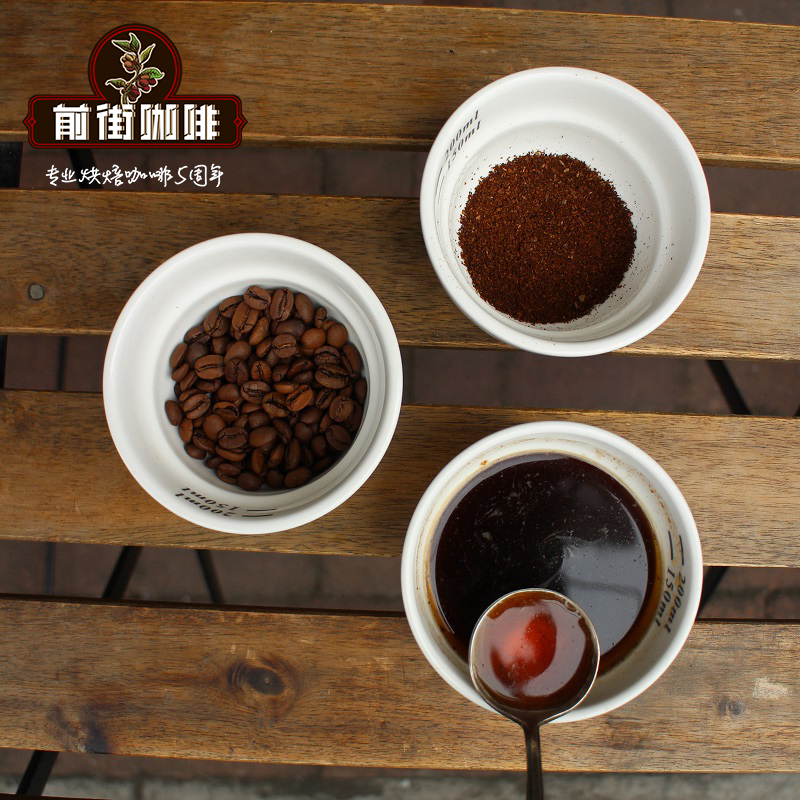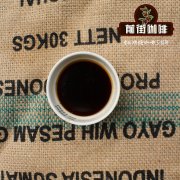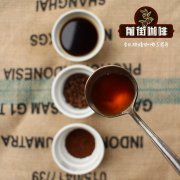Types of coffee, classification and taste of coffee beans? What are the common types and classifications of coffee?

Professional coffee knowledge exchange more coffee bean information please follow the coffee workshop (Wechat official account cafe_style)
Types of coffee, classification and taste of coffee beans? What are the common types and classifications of coffee?
At present, coffee beans are grown in about 66 countries in the world, and they can be classified as Arabica, Robusta and Liberica. There are four kinds of coffee trees in the world, but only two have real commercial uses and have been planted in large quantities. One is the Arabica species (ARABICA) and the other is ROBUSTA.
First, Arabica is the largest major variety of coffee beans at present, accounting for about 80% of its aroma and quality.
Elaraby is the most cultivated in the world, accounting for more than 70% of the coffee supply, mostly in tropical Central and South America. Its coffee beans are small in shape, oval in front, narrow and tortuous in the middle, and complete in arc on the back of the beans. This kind of coffee tree is difficult to grow. They like mild days and cooler nights. It will be hit by too cold, too hot and too much rain. The coffee trees planted by Elaraby need to be planted on sloping slopes at high elevations, so harvesting must be done manually, which is extremely difficult. However, due to the special aroma, rich flavor and less caffeine of Elaraby coffee beans, it is not easy to grow, but in fact it accounts for 70% of the total coffee planted.
Coffee advertisements often emphasize that they use 100% Arabica coffee. In terms of price alone, Arabica is indeed more advanced. Generally speaking, the price of Arabica coffee beans is twice that of Robusta.
In terms of composition, Arabica is low in caffeine (0.9-1.2%), 60% more fatty and twice as high in sugar, so taken together, Arabica tastes sweet and soft, with a plum-like sour taste.
In addition, Arabica's chlorogenic acid is low (5.5-8%), and chlorogenic acid is not only antioxidant, but also an important component of resistance to pests, so Arabica is more vulnerable to insects and climate, and is generally planted at higher elevations. the results are less and slower. The fruit is oval.
At present, Brazil is the largest grower of Arabica, while Colombia produces only Arabica coffee.
Second, Robusta is mostly used to make instant coffee because of its poor quality.
Robasta grows coffee trees in Madagascar in central and western Africa and Indonesia in Asia. It was discovered at the end of the last century in the Congo, which was formerly a Belgian dependency with high humidity and high temperature in Africa. The trees and leaves are bigger than Elaraby. Its coffee bean shape is larger, the front is more round, the back is round and convex, the crack is straight, a bit like a big barley seed. Robasta coffee trees are resistant to high temperature, cold, drought, humidity, and even diseases (especially leaf spot), and can be harvested many times. It is highly adaptable and can grow well on flat land, so harvesting does not necessarily need manual work, but can be carried out by vibration machines. As far as planting is concerned, it can be said that there are many advantages for Robasta to grow coffee trees, but it is a pity that the coffee beans produced are poor in aroma, bitter, lack of acidity, and twice as much caffeine as Elaraby. As a result, Robasta coffee beans are mostly used for brewing iced coffee, instant coffee, canned coffee and blending.
In contrast, Robusta, which is high in caffeine (1.6-2.4%) and low in fat and sugar, tastes bitter and strong, and some even say it tastes rubber.
Robusta has a high content of chlorogenic acid (7-10%), which is not easy to be affected by insects and climate. It is generally planted at a low altitude, resulting in many results and fast speed. The fruit is round.
At present, the largest grower of Robusta is Vietnam, which is also produced in Africa and India.
Third, Liberica is rarely mentioned because of its quality and low yield. The unique flavor of coffee is irresistible, and the unique flavor is loved by everyone.
[blue Mountain Coffee (BLUE MOUNTAIN)]
Place of origin: Jamaica, Colombia, Honduras, Guatemala
Is produced in the Jamaica Blue Mountains above 2500 feet above sea level coffee beans, is a kind of slightly sour, supple, sweet, delicate flavor coffee; pure Blue Mountain coffee taste (sour, bitter), light flavor, but tastes very mellow and delicate, is a kind of coffee that can be enjoyed by a single product; elegant aroma, slightly chocolate sweet taste, with aristocratic taste, is the best in coffee.
[mocha coffee (MOCHA)]
Place of origin: Yemen
Mocha Kafei can be said to be one of the main coffee beans in the world. At present, the coffee produced in Yemen is the best, followed by the mocha of Ethiopia; the mocha coffee belt is smooth with strong acid, good sweetness and unique flavor, such as sour cheese and chocolate; it has the temperament of a lady and a lingering finish in the mouth. It is a kind of pure coffee with unique characteristics. Usually the brand name is directly named by the place name, while "mocha" is the name of the port where Europeans bought coffee for the first time, which faces the Red Sea. "Moka Matari" belongs to the top and variety, and is widely loved by the public. Even if it is used in total coffee, it is very popular because it can suppress the shortcomings of other coffee beans. Mocha, Brazil and Colombia are also known as the "comprehensive treble", and most mixed coffees use mocha.
[cappuccino coffee (CAPPUCCINO)]
Place of origin: Italy
Cappuccino is a soft foam floating on top of espresso. In Italy, drinking a cappuccino in the morning is a deep-rooted popular habit. The originally bitter espresso is rich in flavor and mild in taste because of a layer of foam floating in it. The bitter taste left in the mouth after drinking can make the drinker enjoy the aroma of baking. Sprinkle some cinnamon or lemon peel on top, can highlight the fragrance, there is a different flavor.
[Colombian Coffee (COLOMBIA)]
Place of origin: Colombia
Colombian coffee is characterized by SUPREMO, which is soft, mellow and sweet, slightly sour to moderately sour, stable in quality and flavor, and is used to prepare comprehensive coffee. Colombian coffee beans are graded according to particle size, and the top variety, "Columbia Spremo", accounts for only about 10% of all coffee beans. However, the standard "Colombian Celso" is also one of the high-quality raw beans, whether it is a single product or a combination of drinking, are popular.
[MANDELING Coffee]
Place of production: Indonesia, Sumen hunting
Is produced in Indonesia, Sumatra in the most representative coffee; Mantenin flavor fragrant, strong, bitter, taste is quite strong, but supple without acid, in the name of origin, bitterness is its unique, in the case of deep roasting to quote the most appropriate. Roasting too light will have a pink taste, because the output is very small, so Mantenin is the most expensive coffee bean in coffee, is the best quality coffee produced in Indonesia.
[carbonated coffee (CHARCAL FIRE)]
It is a kind of heavily roasted coffee, which tastes charred, bitter without acid, and coffee beans produce oil, so it is very suitable for steam pressurized coffee.
[Brazilian coffee (SANTOS)]
Place of origin: Brazil (Brazil is the world's largest coffee producer, accounting for about 1% of the world's output. The most famous is "Brazilian Santos Coffee".
Among them, "No.2 Screen18" is the highest variety. )
Brazil is the number one coffee producer in the world. Brazilian coffee is mild, slightly sour and slightly bitter. It is the representative of neutral coffee and an indispensable variety for the blending of mild coffee. The most popular way to drink Brazilian coffee is not to add cream, but only sugar. Therefore, when drinking "Brazilian coffee", you can have fun as long as you add granulated sugar.
Important Notice :
前街咖啡 FrontStreet Coffee has moved to new addredd:
FrontStreet Coffee Address: 315,Donghua East Road,GuangZhou
Tel:020 38364473
- Prev

What is Java mocha? The flavor characteristics of Java coffee how to drink Java coffee?
Professional coffee knowledge exchange more coffee bean information please follow the coffee workshop (Wechat official account cafe_style) what is the flavor of Indonesian coffee? Clean + fruity + sweet + spicy! But many people do not agree with the above answer. They think that traditional Indonesian coffee should have a strong sense of soil, spicy stimulation caused by fermentation, and a sense of wet wood fiber.
- Next

The basic classification of coffee varieties? What are the common types and characteristics of coffee? The name of the classification of coffee beans
Professional coffee knowledge exchange more coffee bean information please follow the coffee workshop (Wechat official account cafe_style) the basic classification of coffee varieties? What are the common types and characteristics of coffee? What is the name and taste of coffee beans? Coffee beans can be divided into Arabica and Robusta: Arabica accounts for about 70% of the total output of coffee in the world.
Related
- Detailed explanation of Jadeite planting Land in Panamanian Jadeite Manor introduction to the grading system of Jadeite competitive bidding, Red bid, Green bid and Rose Summer
- Story of Coffee planting in Brenka region of Costa Rica Stonehenge Manor anaerobic heavy honey treatment of flavor mouth
- What's on the barrel of Blue Mountain Coffee beans?
- Can American coffee also pull flowers? How to use hot American style to pull out a good-looking pattern?
- Can you make a cold extract with coffee beans? What is the right proportion for cold-extracted coffee formula?
- Indonesian PWN Gold Mandrine Coffee Origin Features Flavor How to Chong? Mandolin coffee is American.
- A brief introduction to the flavor characteristics of Brazilian yellow bourbon coffee beans
- What is the effect of different water quality on the flavor of cold-extracted coffee? What kind of water is best for brewing coffee?
- Why do you think of Rose Summer whenever you mention Panamanian coffee?
- Introduction to the characteristics of authentic blue mountain coffee bean producing areas? What is the CIB Coffee Authority in Jamaica?

